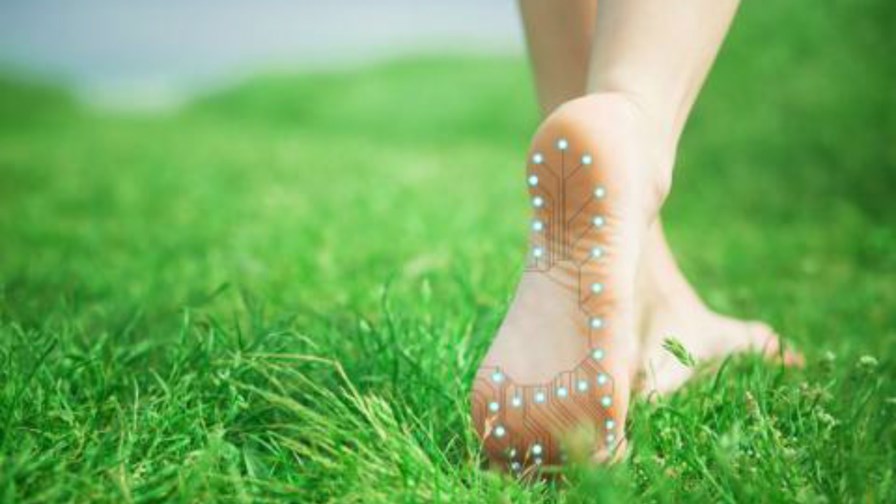
Source: HCi Viocare
The old American spiritual had it right, the toe bone is connected to the foot bone, the foot bone's connected to the heel bone, the heel bone's connected to the anklebone and so on through the length of the human body. But these days it's not Ezekiel who's joining up dem dry bones but the Internet of Things (IoT) and a UK-headquartered company HCi Viocare Technologies, the inventor of the Smart Insole.
The device is designed for the healthcare and sports markets and aimed at people, running the gamut from athletes to lounge lizards, (see what I did there?) who want to be able to monitor the stresses and strains to which their bipedal extremities are regularly exposed.
It's wireless, of course, and data from the tootsies is relayed from the slip-in insole and relayed back to a smartphone or tablet (and soon a smart watch) where the differing pressures the wearer applies to the insole are analysed both in real-time and post-event.
HCi Viocare Technologies claims that the IoT insole can deliver 'life-changing' results for people with ailments and diseases such as diabetes and 'game-changing' results for athletes and sports aficionados by preventing injury and, in some cases, surgery.
The insole consists of a mesh of tiny sensors embedded in a tough absorbent material - and it doesn't come cheap. It is expected to retail in Britain at some £200. However, the company is in discussion with the UK's National Health Service so some of the cost to patients could be mitigated in due course.
Christos Kapatos, CTO at HCi Viocare Technologies commented: “2015 is the year that both industries and individuals will truly begin to feel the impact of connectivity beyond the smartphone and PC. The Internet of Things is happening and we are already witnessing it in our everyday lives [and] our Smart Insole is a great example of exactly how Internet of Things products will radically define our lives over the next decade.”
Healthcare
The Smart Insole could have application in a wide range of problematic orthopaedic and muscular situations as it will relay information to an individual patient about the the pressures and shear experienced by the foot over time and send users warnings about the need to take remedial action.
In the immediate term the device would seem to be of particular utility for diabetics, 70 per cent of whom, as part of the disease, run the risk of developing foot neuoropathy, whereby the feet can lose all feeling and sensation.This can lead to diabetic foot ulcers that can often result in amputation.
Diabetes is on the increase globally and already affects more than 347 million people - and treating the disease is expensive. In England alone, diabetes results in 6,000 foot amputations a year - most of which would be preventable if sufficient real-time and report-back mechanisms were in place.
The company says that further analysis on connected devices or will be able to monitor daily trends and provide data that could lead to patients adopting specialist footwear or orthoses to reduce their risk of developing an ulcer - and the data may even be shared directly with medical practitioners.
Sports
For athletes,professional and amateur, the Smart Insole permits the analysis of foot strike, a view of a model of full lower leg gait to help them fully to understand the impact of running style on ankles and knees. With a real-time relay of information back to the wearer, it enables them to improve running performance and prevent injury.
Statistics show that some to 56 per cent of recreational runners sustain injury each year and there is a direct correlation between how the runner’s foot strikes the ground and injuries sustained.
The company claims that the Smart Insole's capabilities of measuring pressure and shear across the whole of the soles of the feet, an also determine the runner’s weight, balance, calories expended, cadence and distance. It can even advise if running shoes and trainers are so badly worn that they have ceased providing the support required to prevent injury or are users at an increased risk of blisters!
I was going to ask; in the event of another company coming-up with another IoT-based technology and device doing much the same as HCi Viocare's Smart Insole could they be described arch rivals? I won't though. Like a centipede I hate to start off the day on the wrong foot.
Email Newsletters
Sign up to receive TelecomTV's top news and videos, plus exclusive subscriber-only content direct to your inbox.




